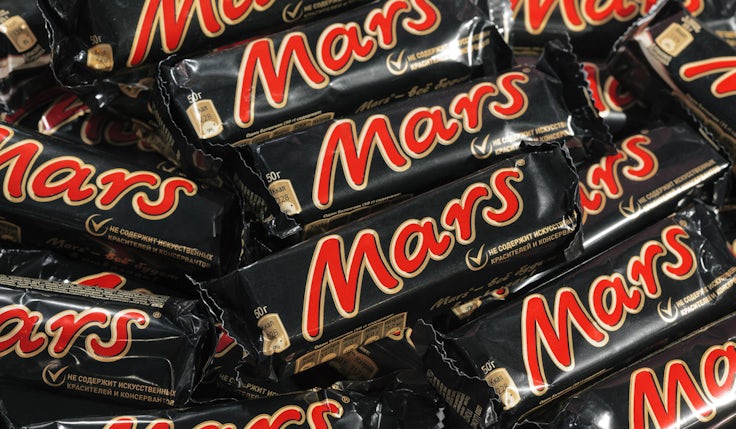Mars claims gender parity on-screen in its advertising
Half of characters depicted in Mars advertising are now women, a 51% increase on 2018 levels. Racial representation has also improved, with people of colour now making up almost two-thirds of those on-screen.

Mars says it has achieved gender parity in its advertising, with female characters now representing 49.9% of those shown on-screen.
The company, which owns brands such as M&M’s, Pedigree and Dolmio, has been working with the Geena Davis Institute on Gender in Media, a US organisation that advocates for equal representation in media. Since Mars began working with the Institute five years ago, the proportion of women represented in its advertising has increased by 51%.
As well as assessing gender, the food company is also looking at better race, identity, disability and age (60+) representation in Mars’ advertising. It claims significant progress on racial diversity in its advertising. The proportion of people of colour featured in the company’s advertising has more than doubled (increased by 117%) since 2018, now representing 63% of those on-screen.
It admits to less progress in other areas of representation. For example, people with disabilities represented just 0.6% of characters portrayed in its advertising, while people with ‘diverse identities’ make up (1.6%), and people over 60 represent 2% of characters.
“We’re incredibly proud of the advancements we’ve made in terms of gender and race representation, but the truth is we still have work to do to meet our vision of representation balance in our advertising,” said Mars Wrigley global president Andrew Clarke.
Mars: Our scale means we can make a real difference to gender equality
While there is still progress to be made for the organisation, Mars has been known for example of diversity and representation in its advertising. In 2016, Maltesers won Channel 4’s inaugural Diversity in Advertising Award for its ‘Look on the Light Side’ campaign celebrating people with disabilities.
In 2017, Michele Oliver, who was then vice president of marketing for Mars Chocolate UK, and is now vice president for brand and purpose at Mars, told Marketing Week the chocolate division was rolling out Maltesers’ approach to diversity in an “intentional and systemic” way.
Maltesers itself has continued to champion representation in its work. In 2021 it looked to break taboos around maternal mental health in a campaign with Channel 4.
Brand purpose has been a factor growing in importance, at Mars Wrigley in particular. Chief brand officer Rankin Carroll told Marketing Week in June that “great brands are only great if they’re doing more than selling things”.
He also said brand purpose was a key pillar of Mars Wrigley’s transformation, with the company looking to put it at the heart of what brands do. Some of those purposes are rooted in diversity and inclusion initiatives; for example, Galaxy’s purpose is to empower women within cocoa growing communities and its retail markets.
In April, the chocolate brand launched a campaign focused on this message, featuring some of its female cocoa growers.
The research conducted alongside the Geena Davis Institute looked at how different groups were represented, in addition to the amount of representation. The most recent report find few instances of stereotyping and showed parity of representation in both gender and race in positions of leadership and speaking roles.
For example, the initial reach in 2018 found women were five times more likely to be doing the cooking in Mars Food ads, by 2022 men were almost two times more likely to be shown cooking.
In 2020, Mars rebranded its Uncle Ben’s rice range to Ben’s Original and dropped the brand character of a black man in a bowtie which featured on its packaging. The move followed criticism the image and name summoned up racial stereotypes.
“We understand the inequities that were associated with the name and face of the previous brand,” Mars Food global president of multisales and global customers, Fiona Dawson said at the time.







